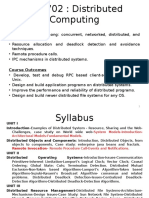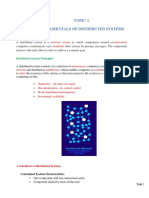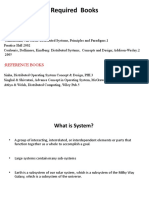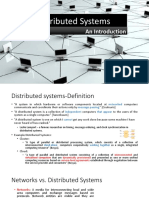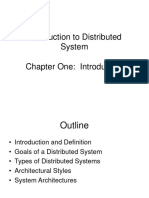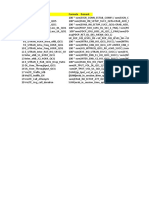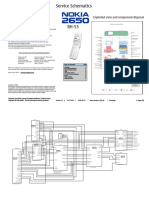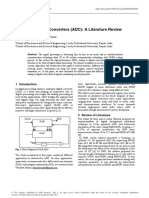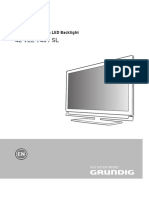0% found this document useful (0 votes)
16 views25 pagesLecture 3 Distributed Systems and Their Challenges
A distributed system consists of networked computers that communicate and coordinate actions by passing messages, appearing to users as a single entity. Key features include resource sharing, scalability, fault tolerance, and challenges such as security and managing heterogeneity. Examples include the Internet, mobile computing, and ubiquitous computing, which integrate technology into everyday life.
Uploaded by
zaeemrana69Copyright
© © All Rights Reserved
We take content rights seriously. If you suspect this is your content, claim it here.
Available Formats
Download as PPTX, PDF, TXT or read online on Scribd
0% found this document useful (0 votes)
16 views25 pagesLecture 3 Distributed Systems and Their Challenges
A distributed system consists of networked computers that communicate and coordinate actions by passing messages, appearing to users as a single entity. Key features include resource sharing, scalability, fault tolerance, and challenges such as security and managing heterogeneity. Examples include the Internet, mobile computing, and ubiquitous computing, which integrate technology into everyday life.
Uploaded by
zaeemrana69Copyright
© © All Rights Reserved
We take content rights seriously. If you suspect this is your content, claim it here.
Available Formats
Download as PPTX, PDF, TXT or read online on Scribd
/ 25









